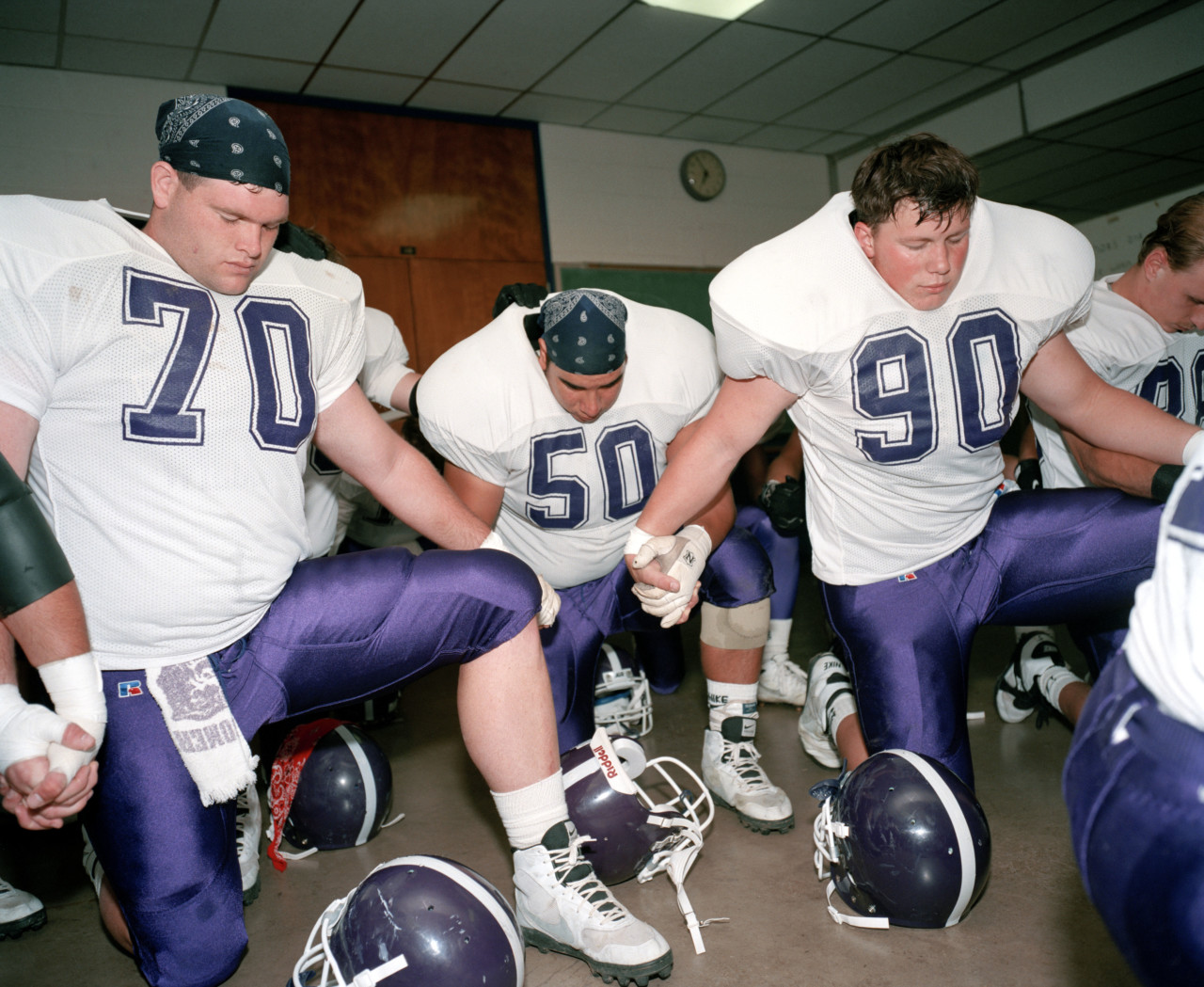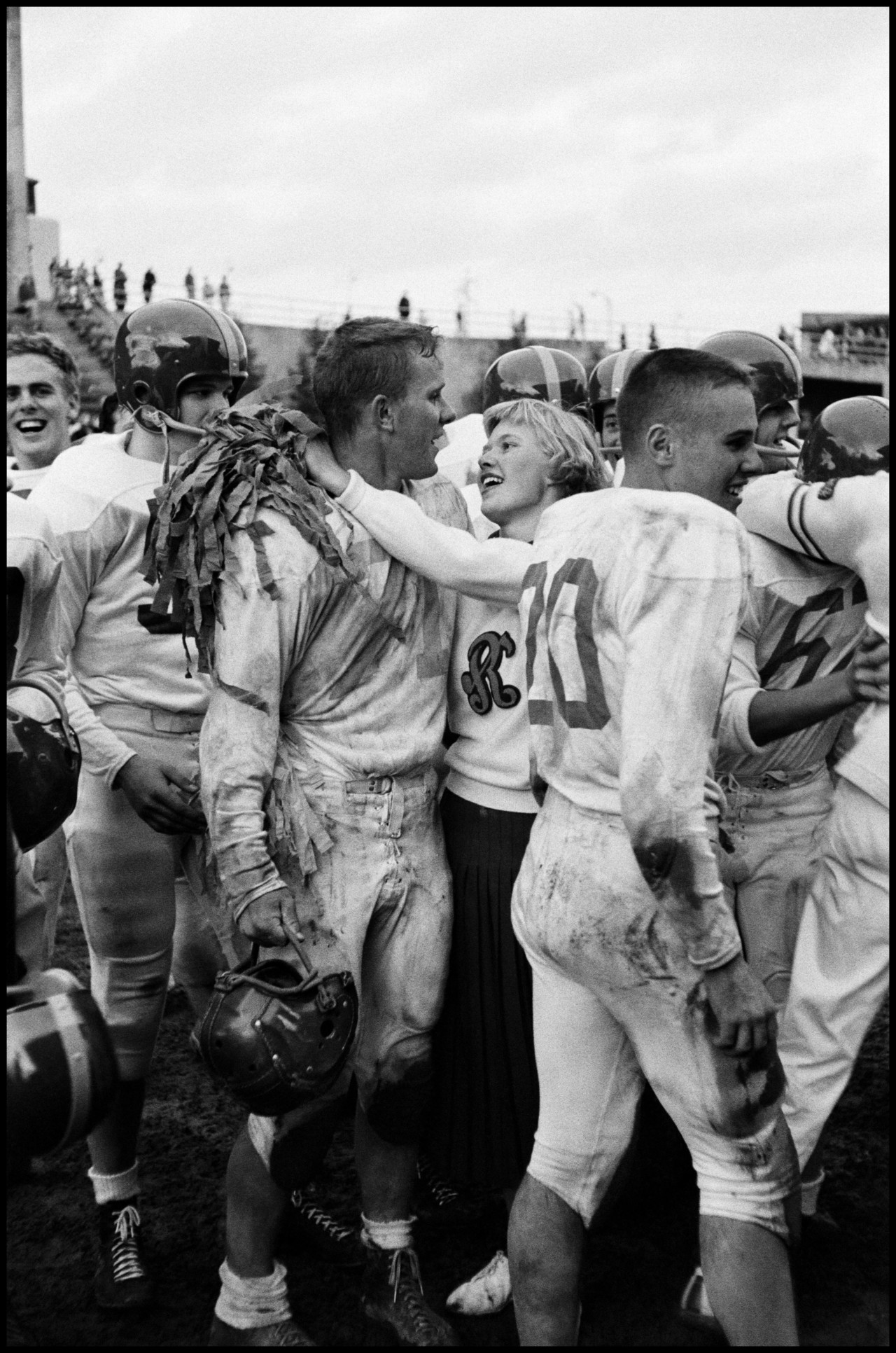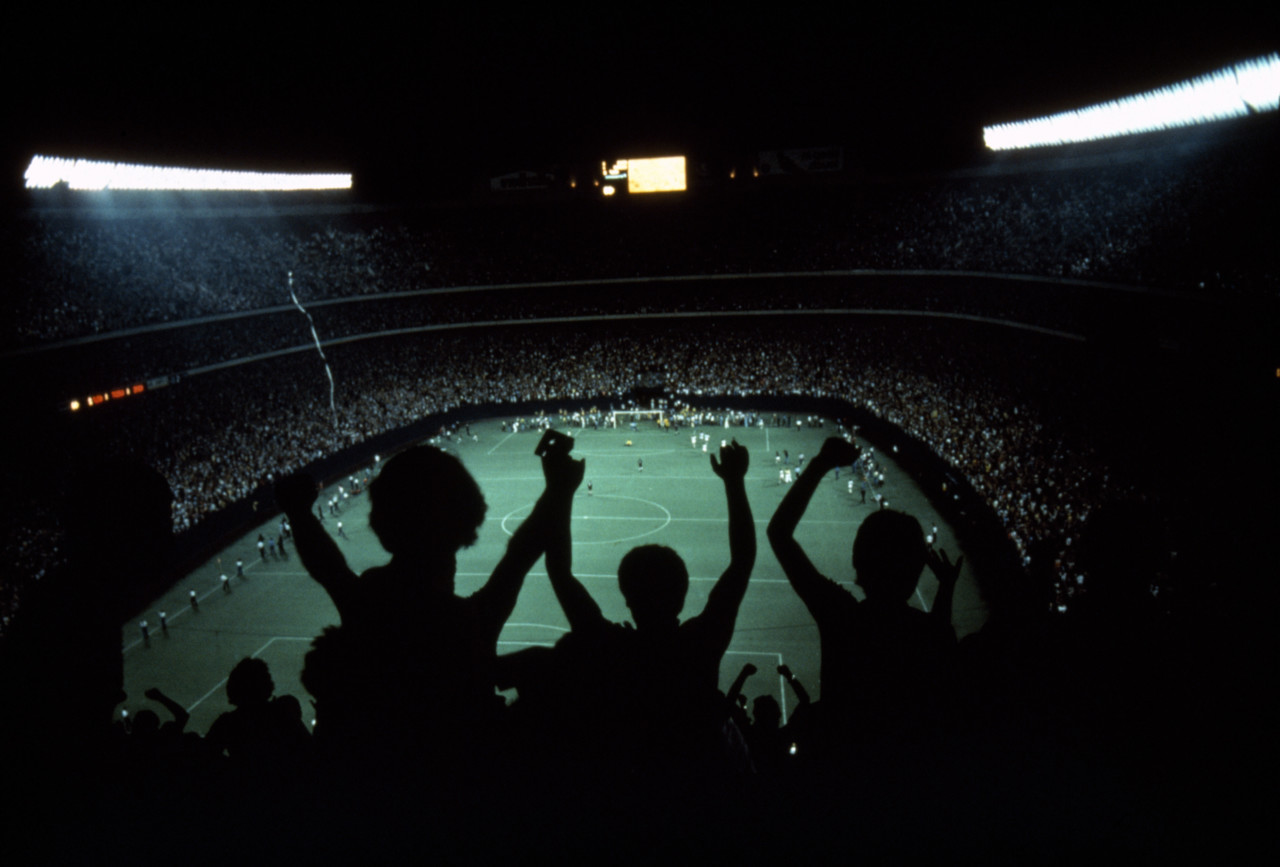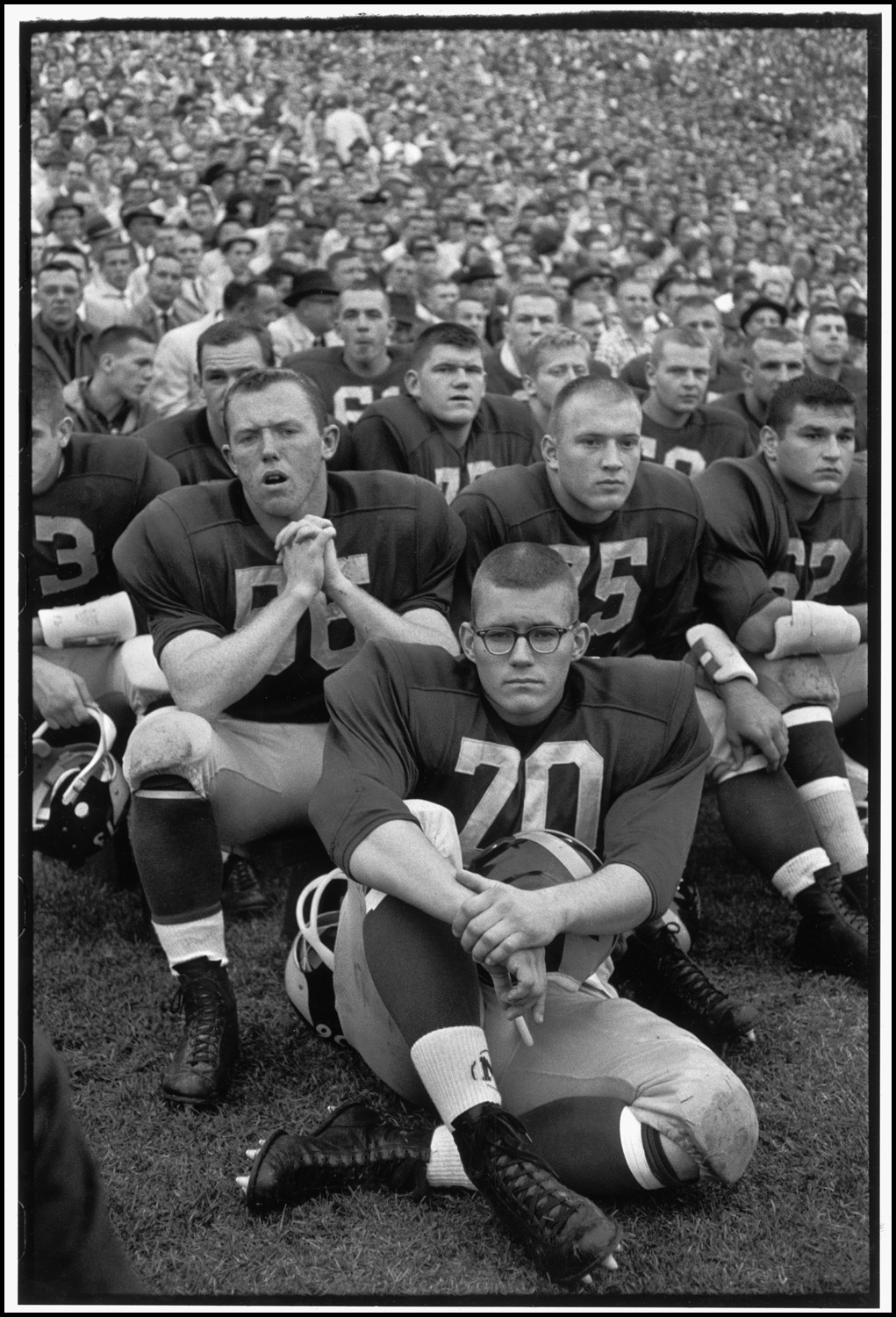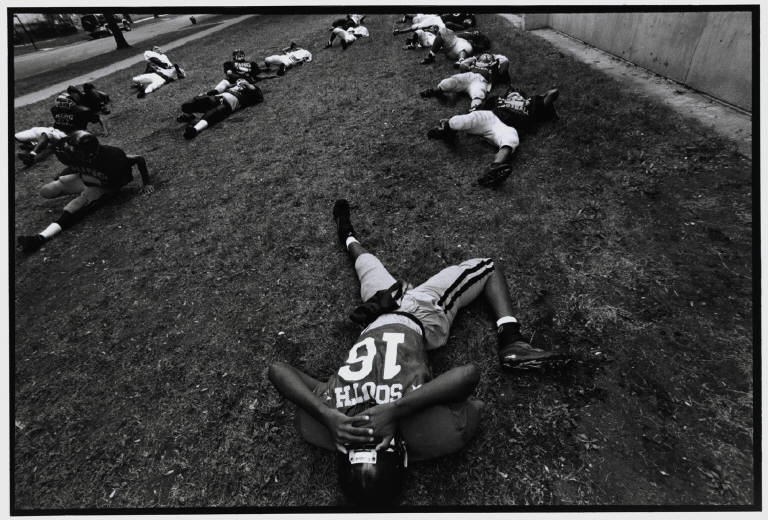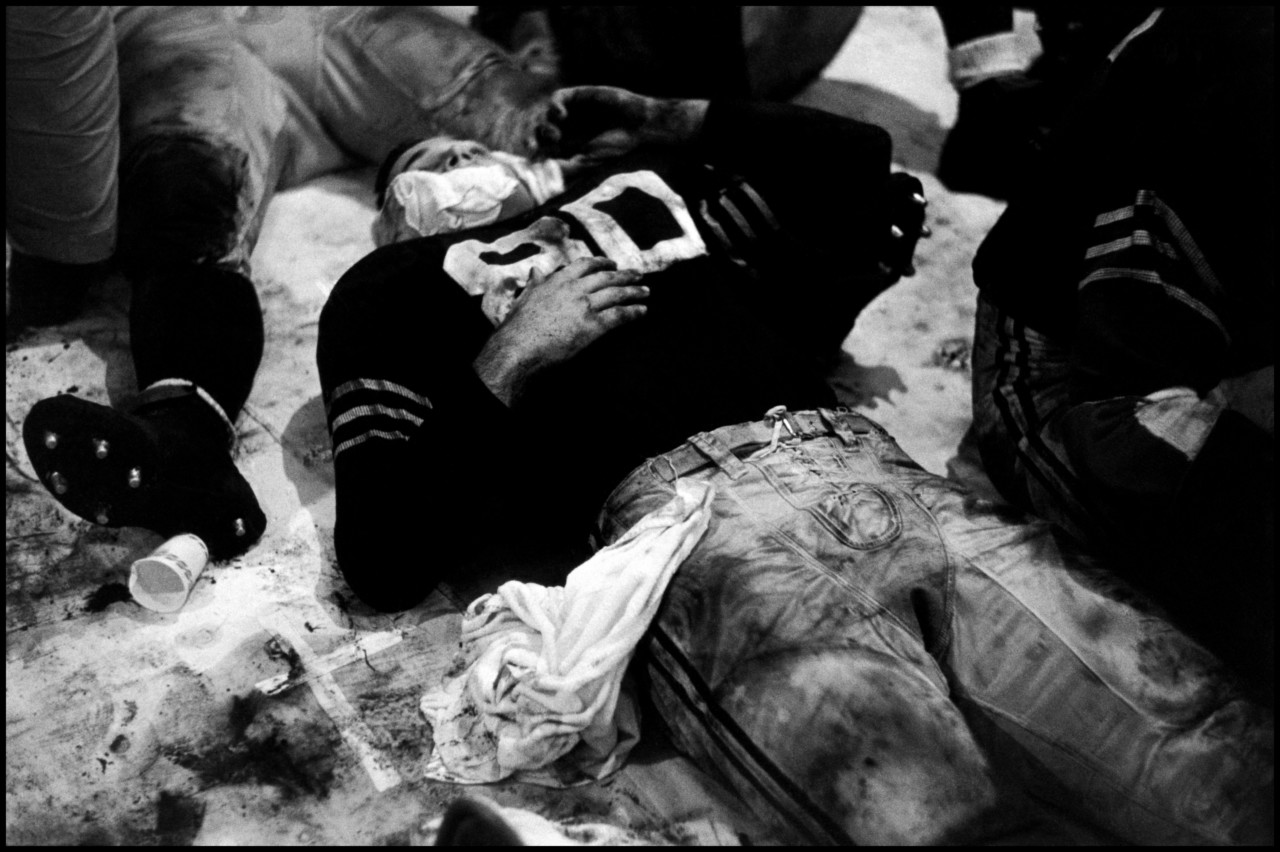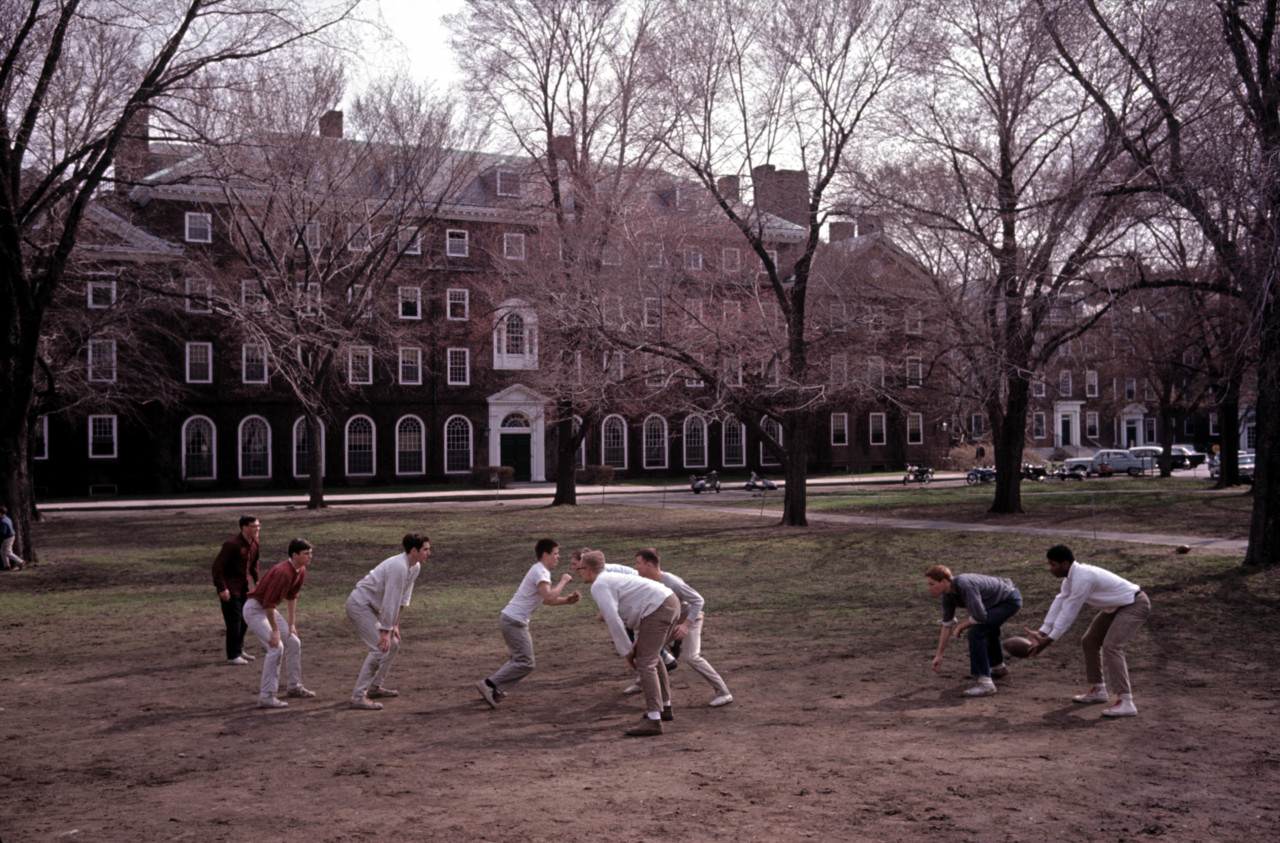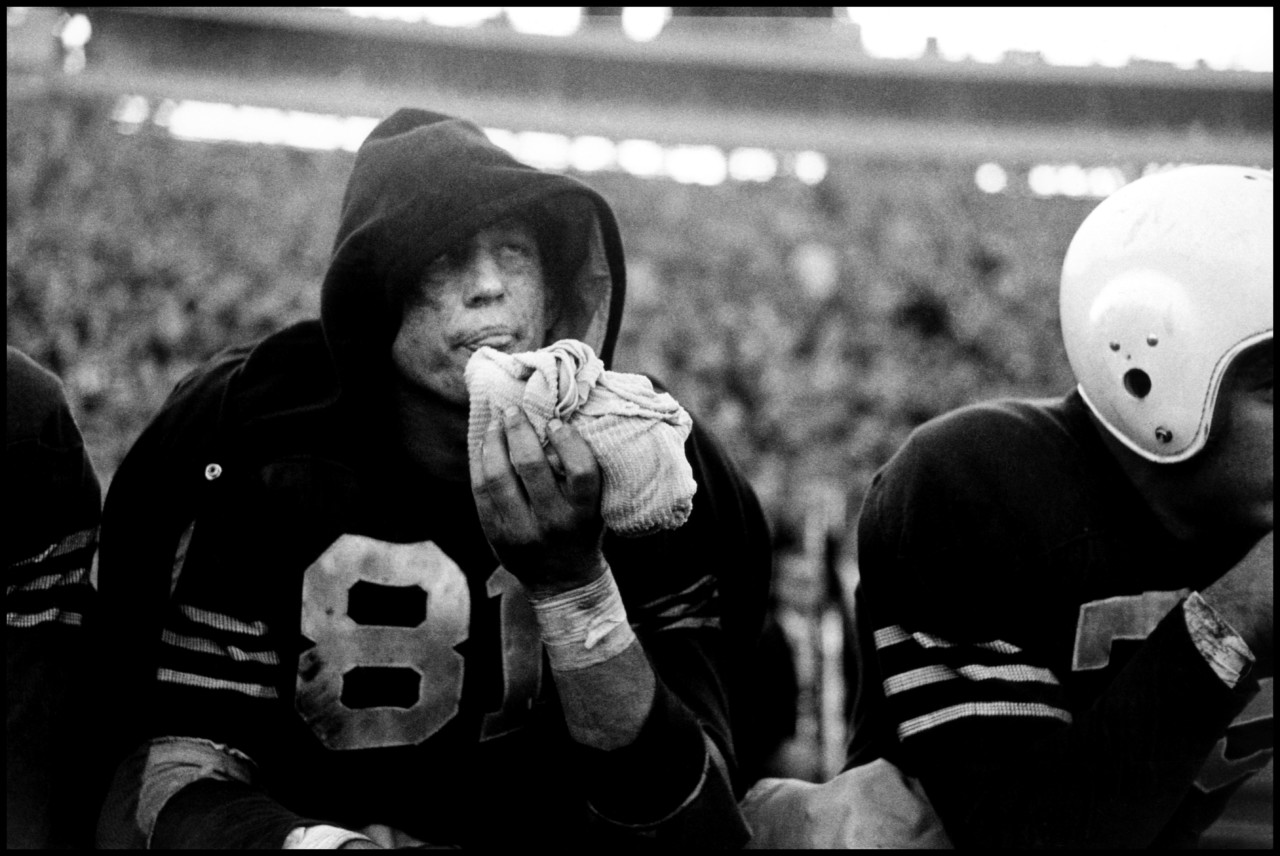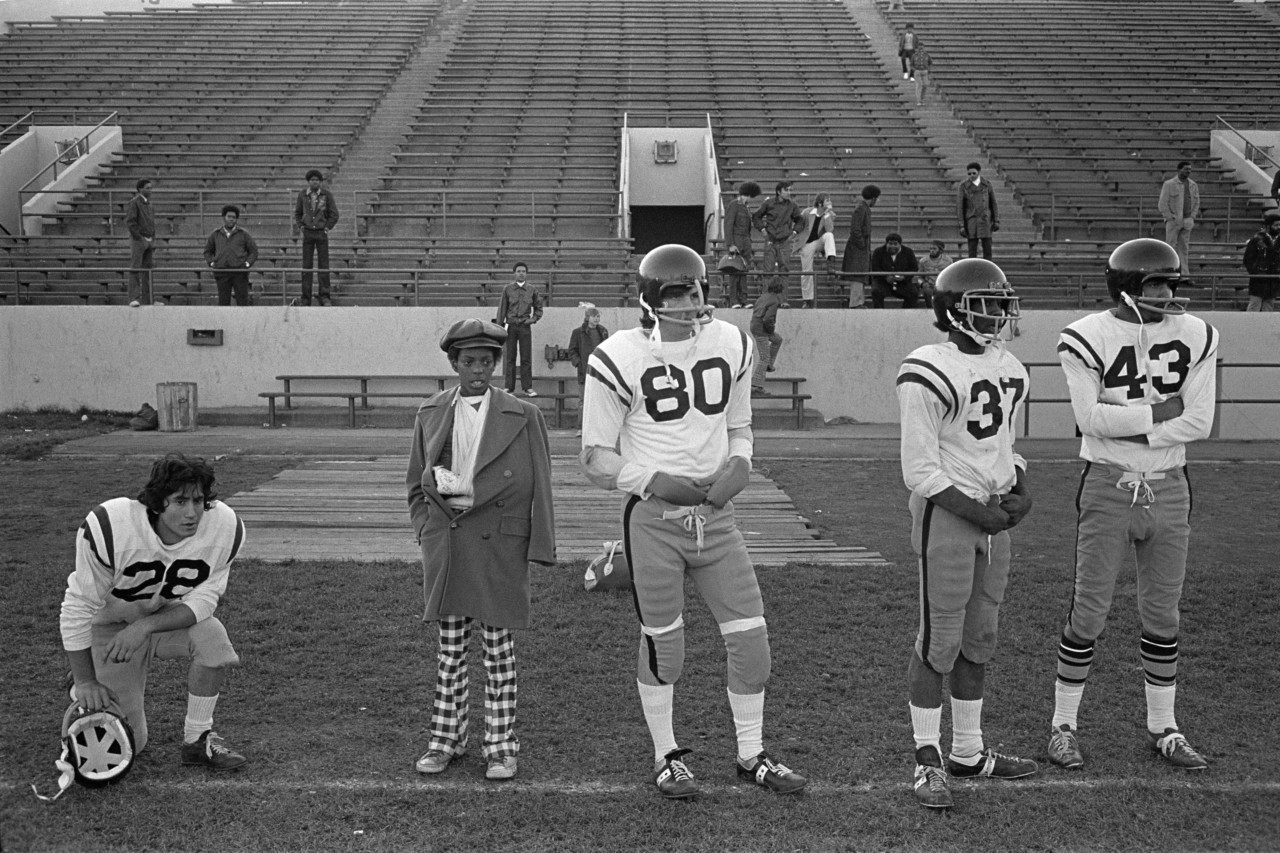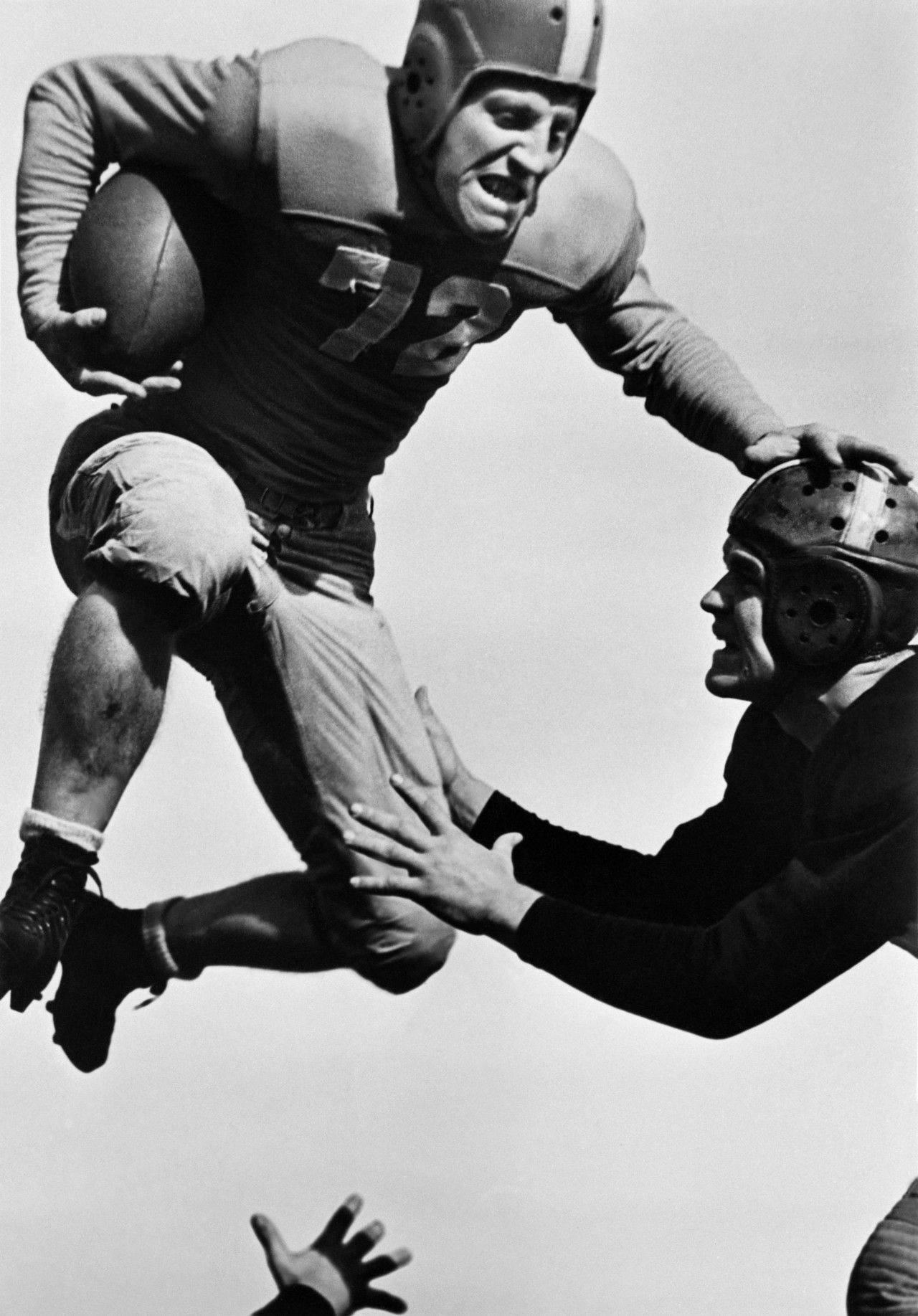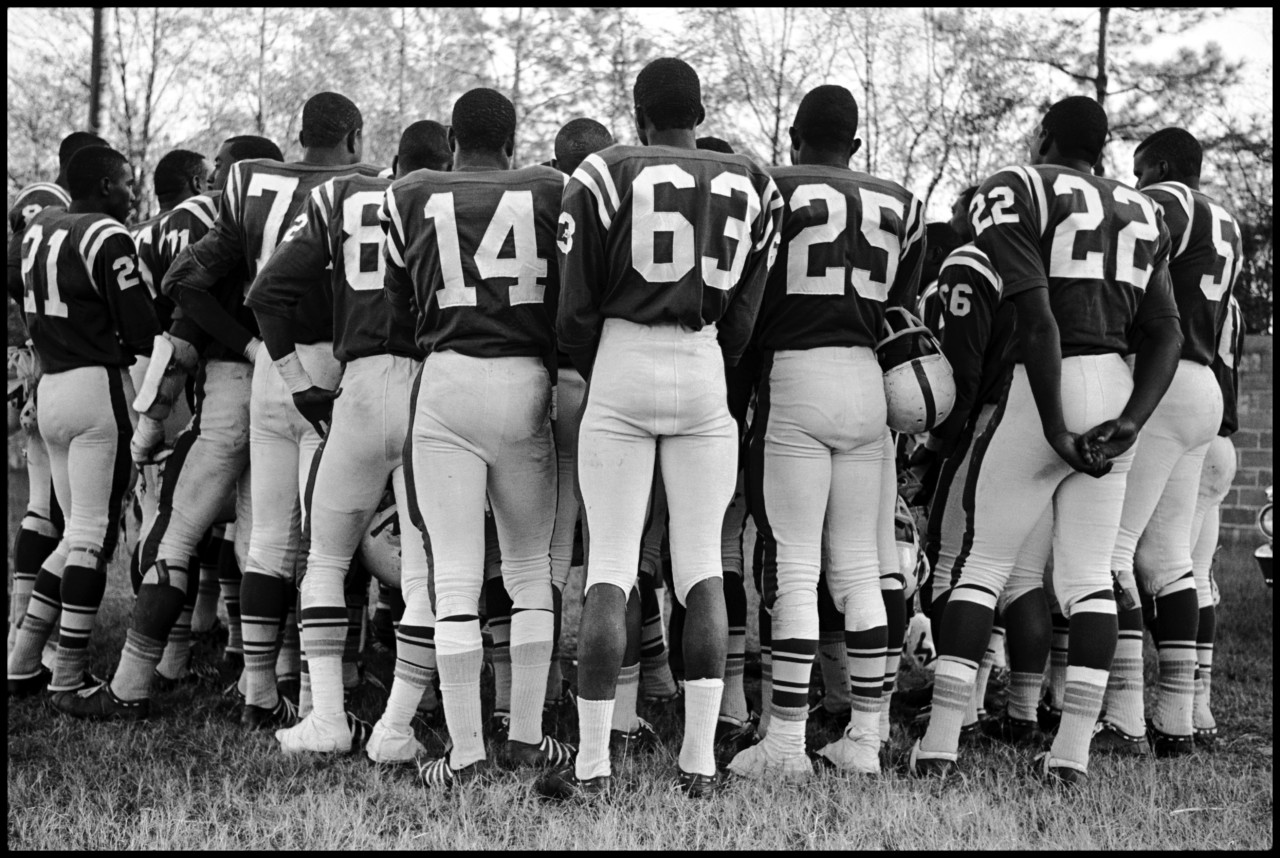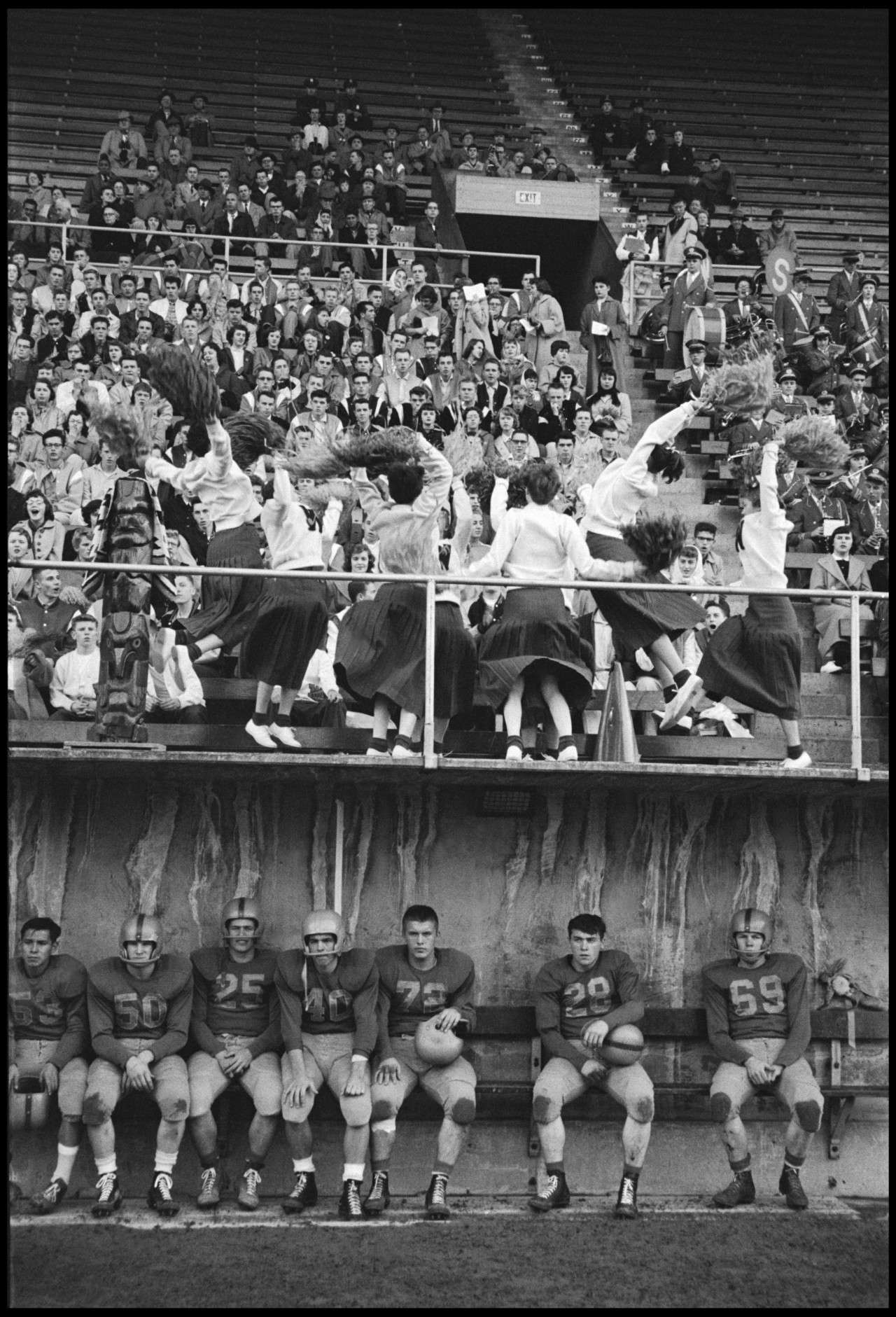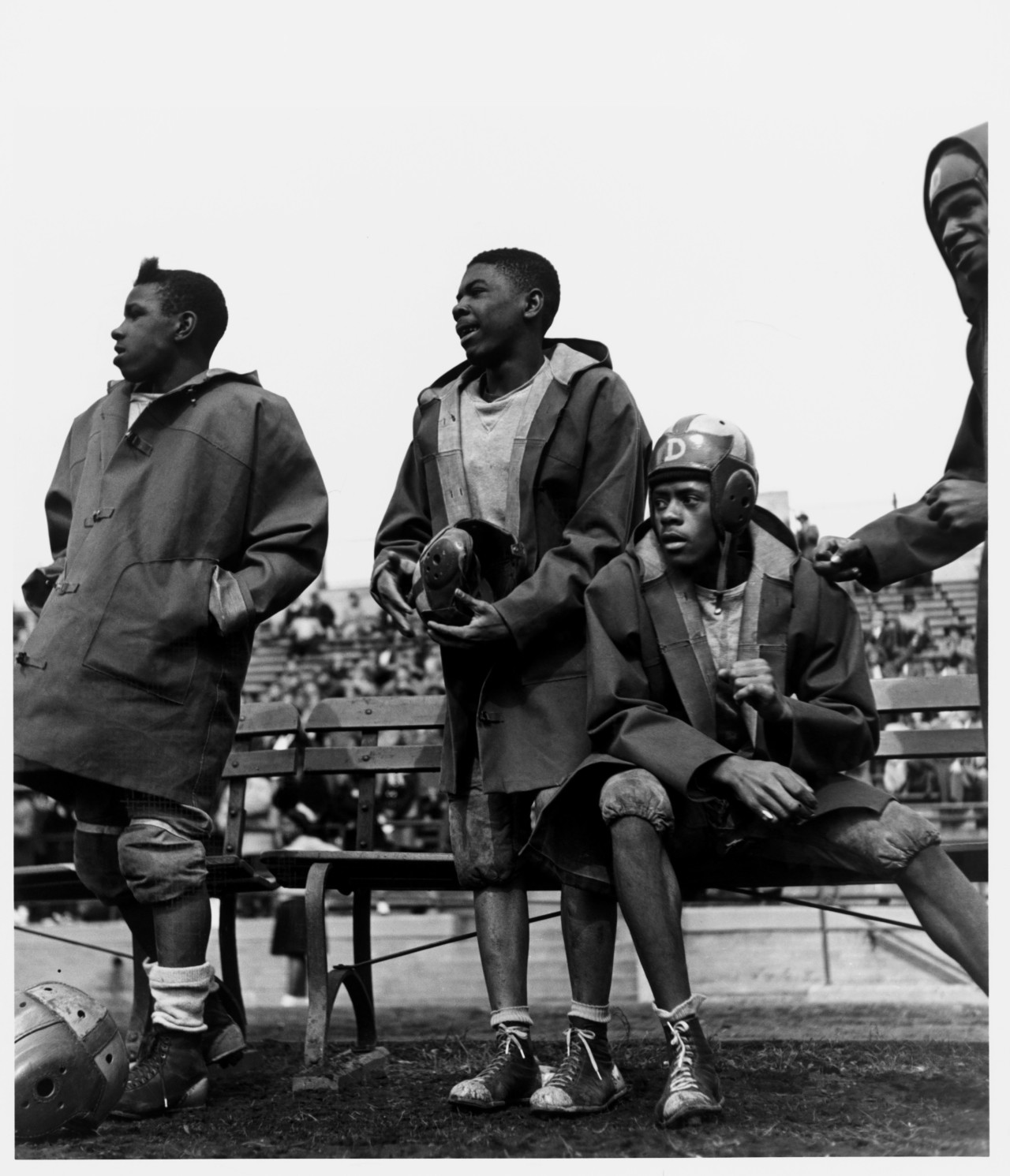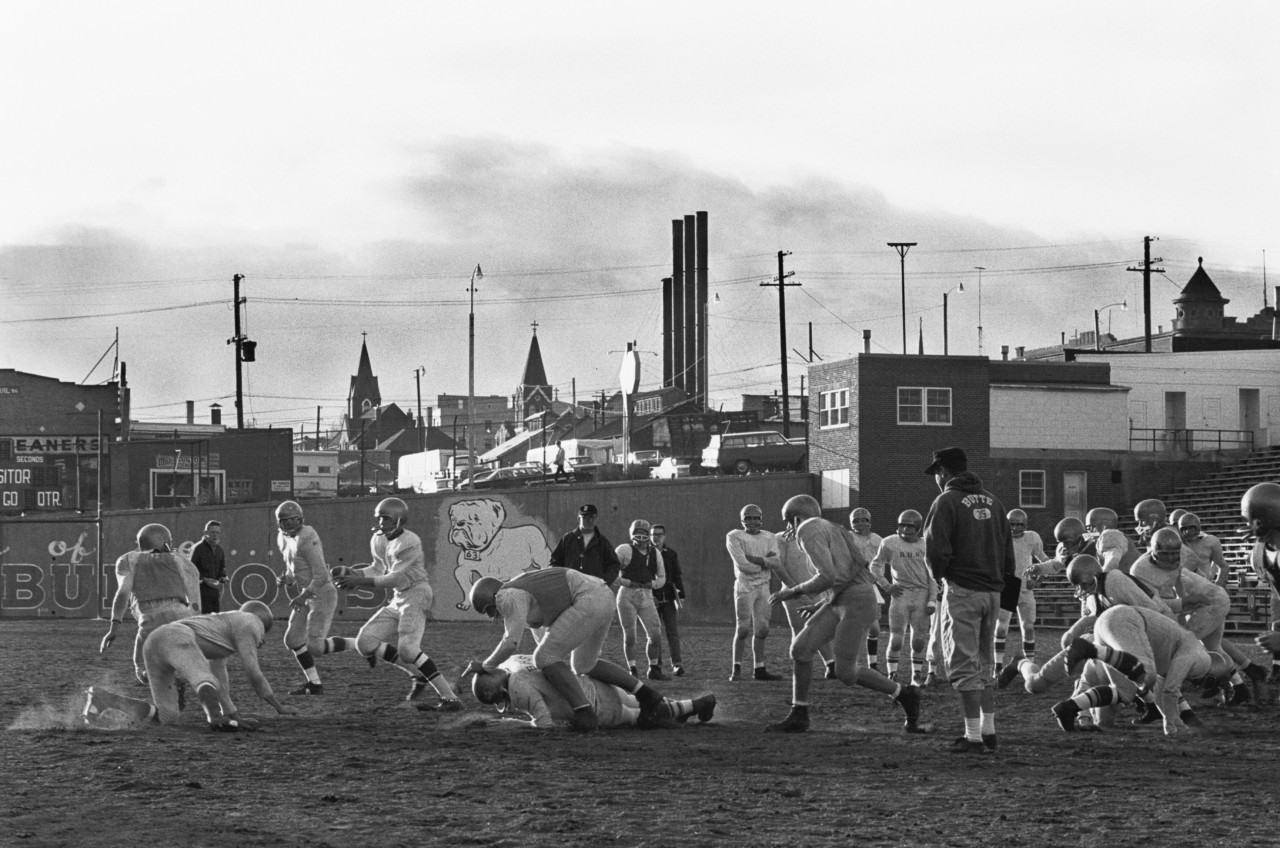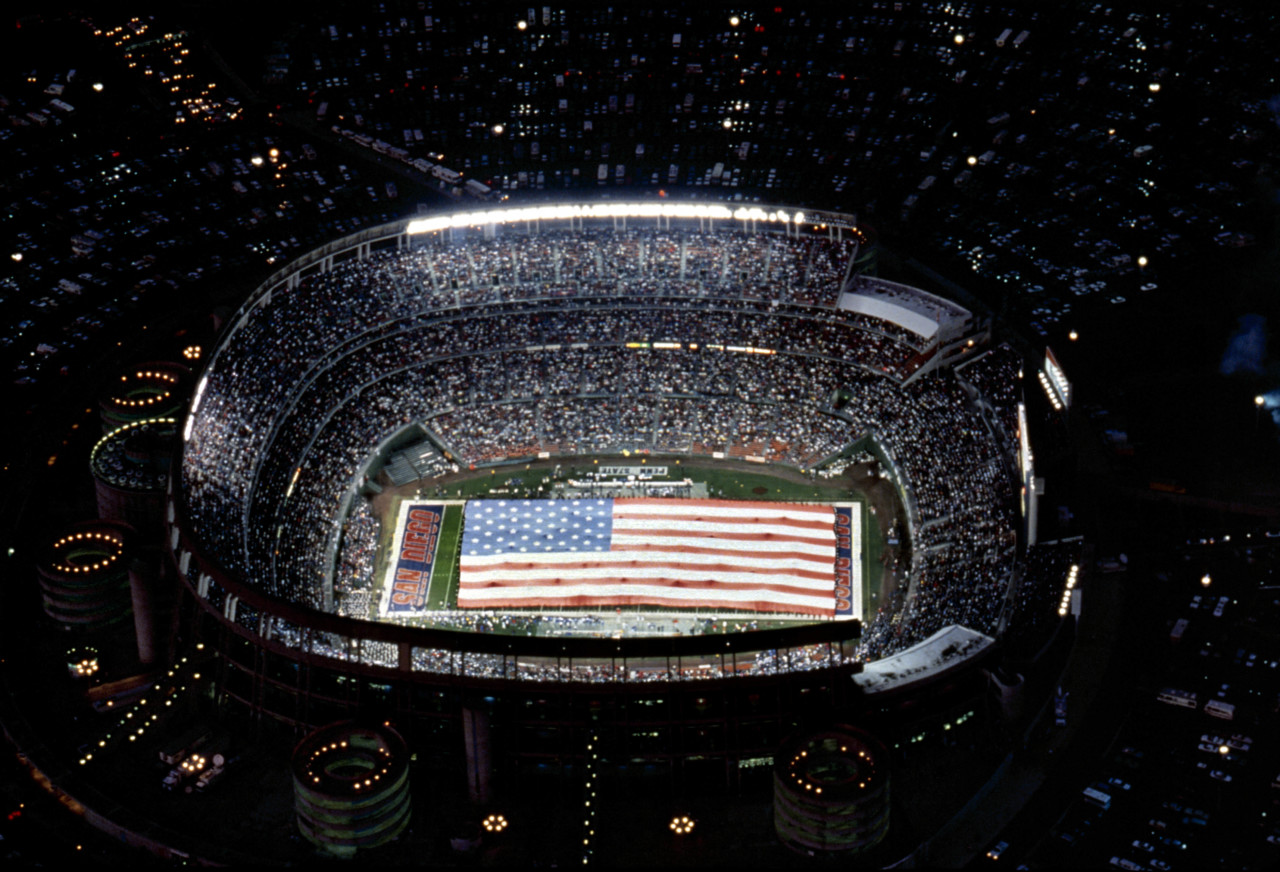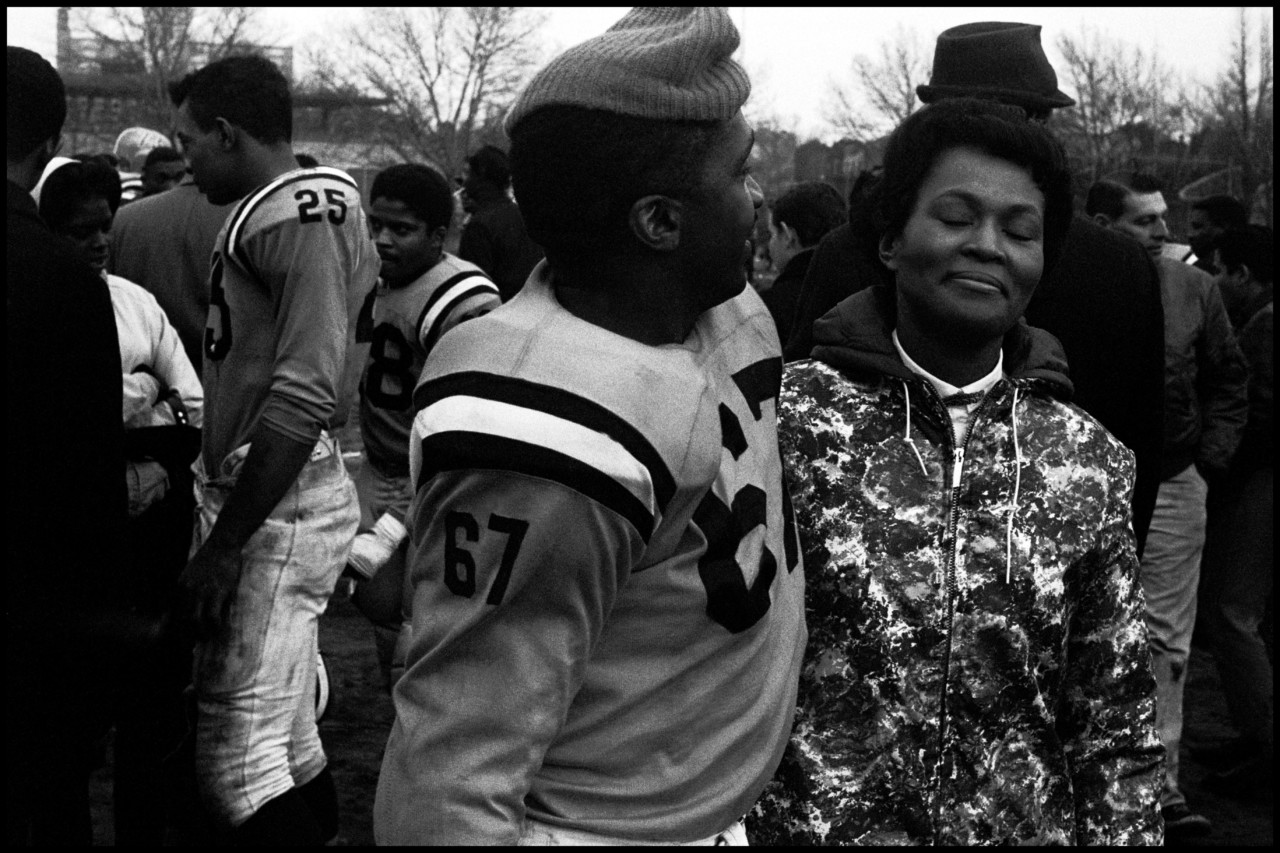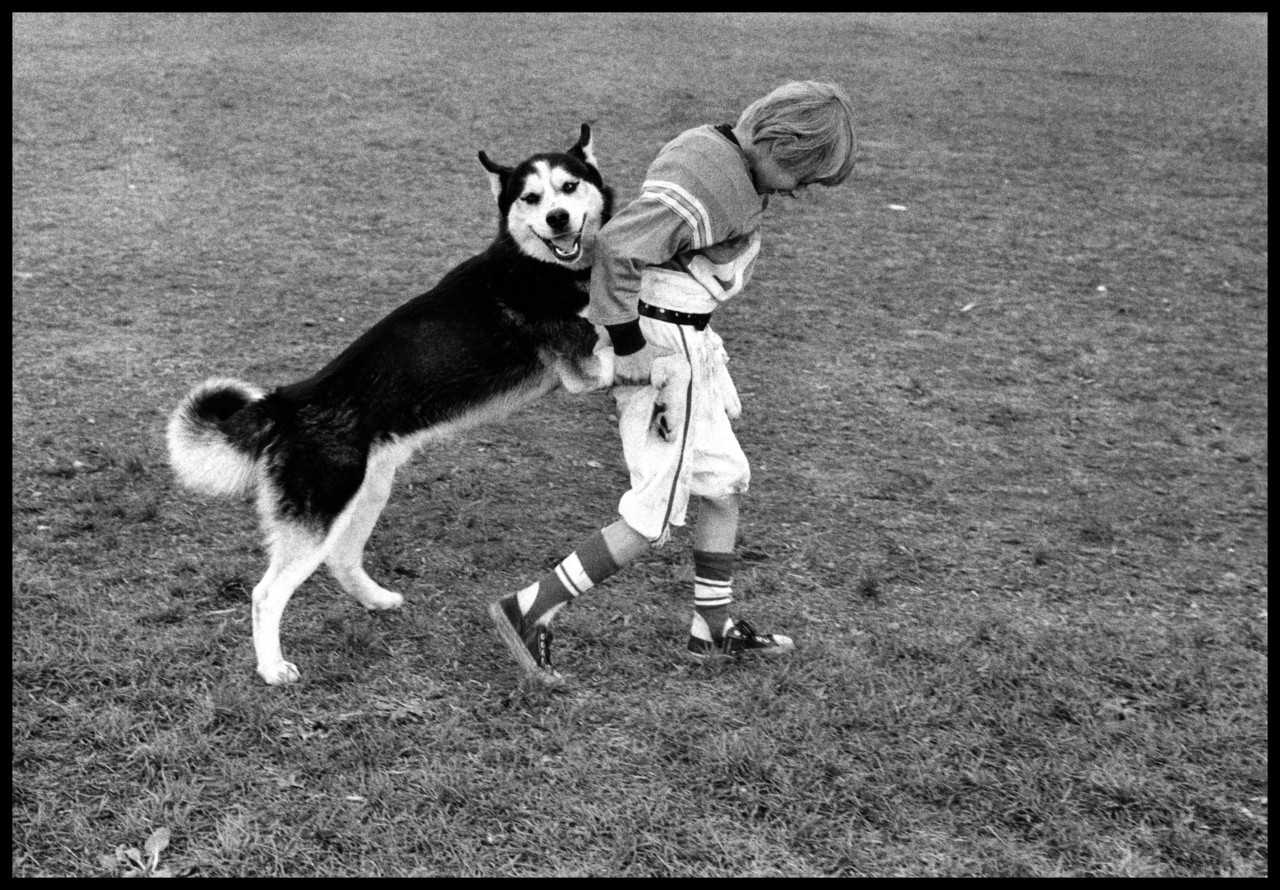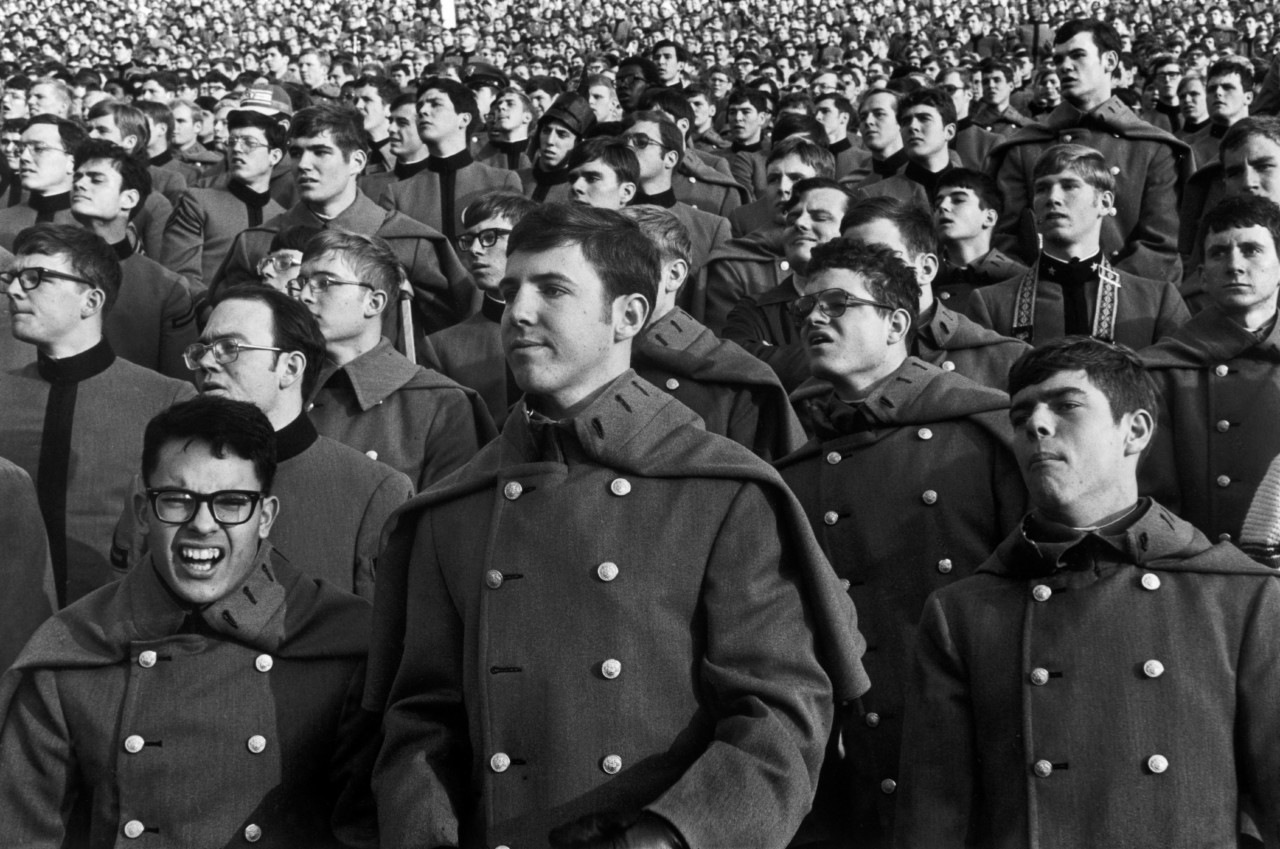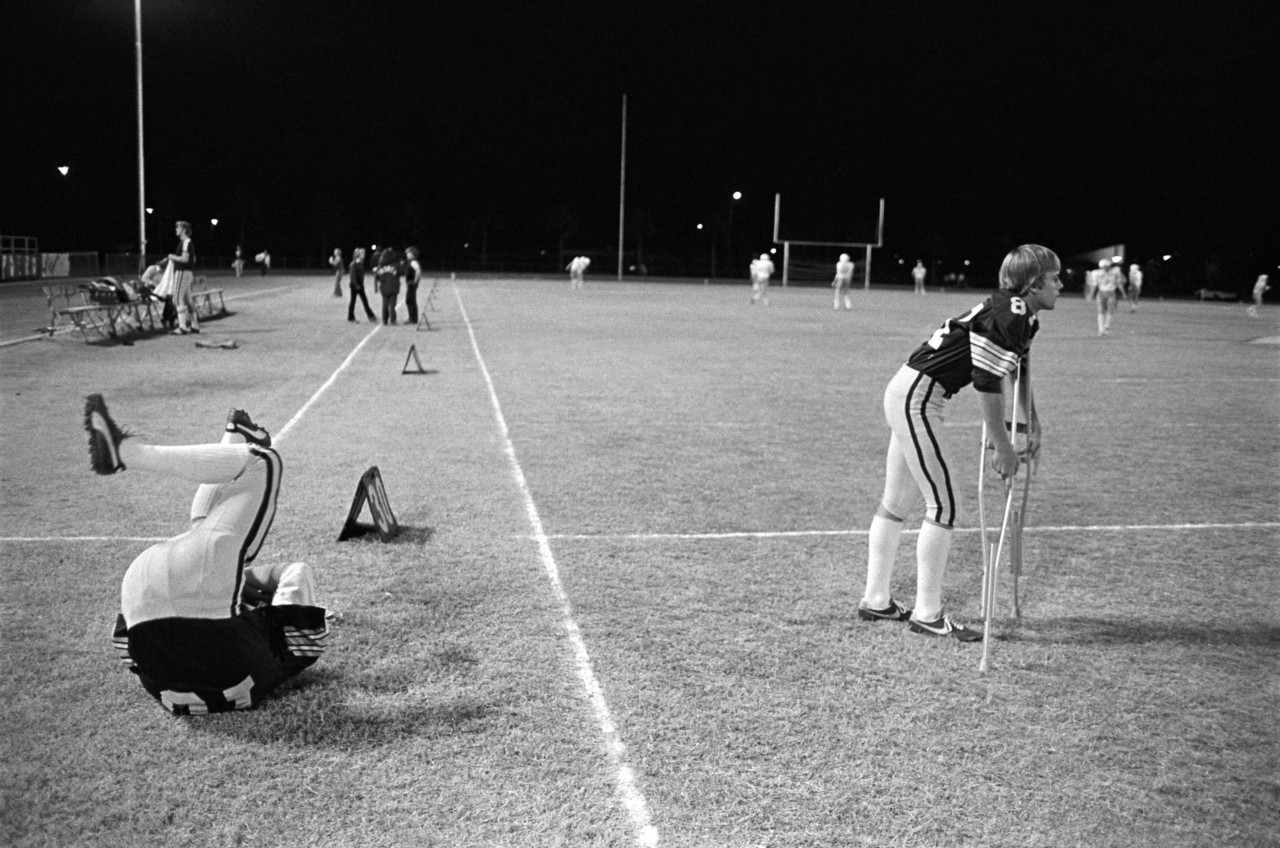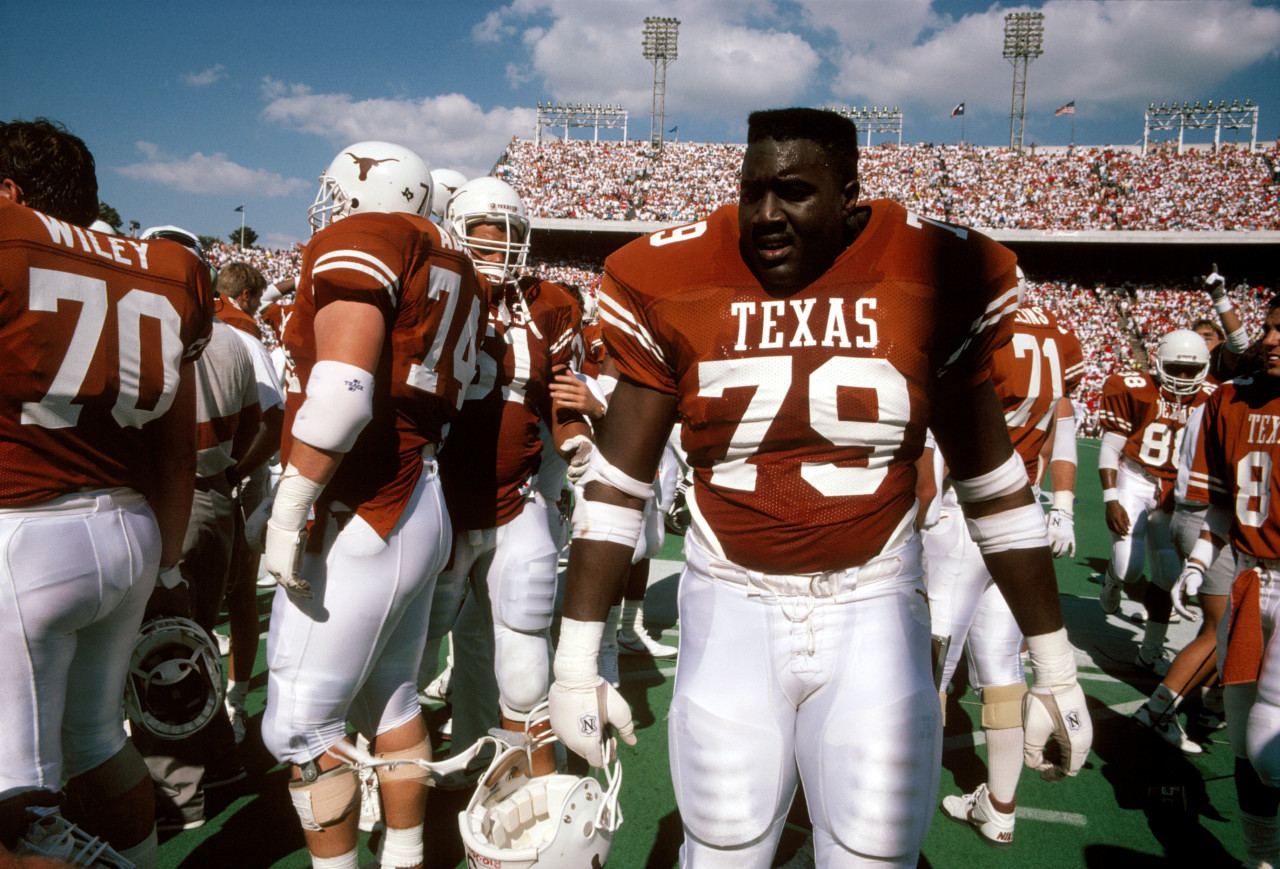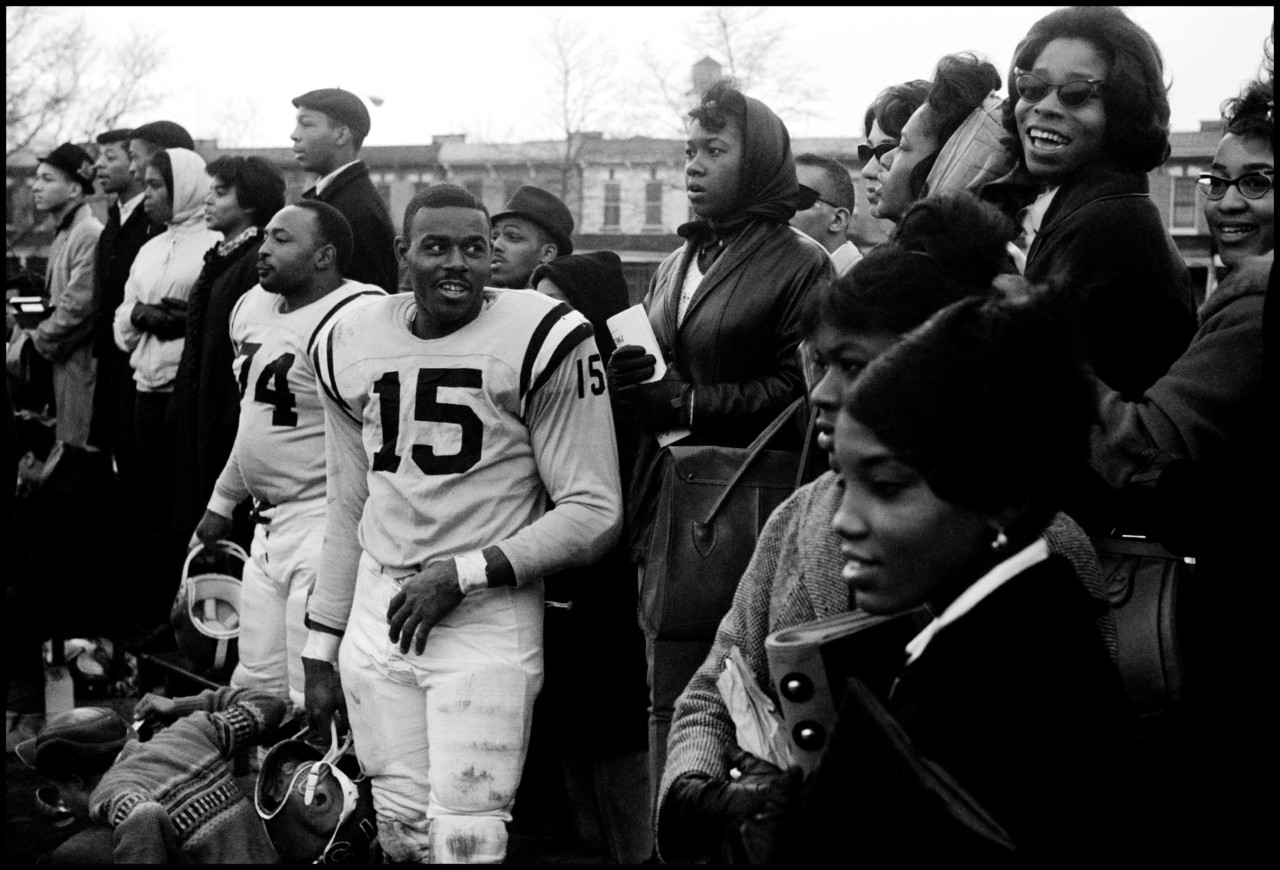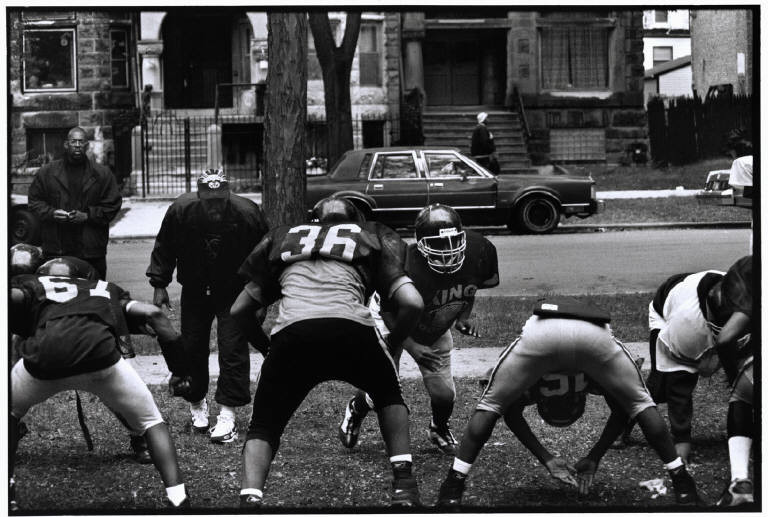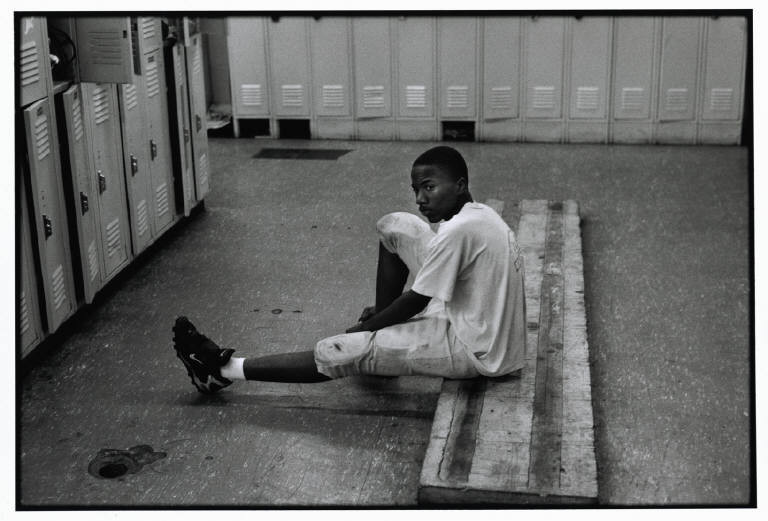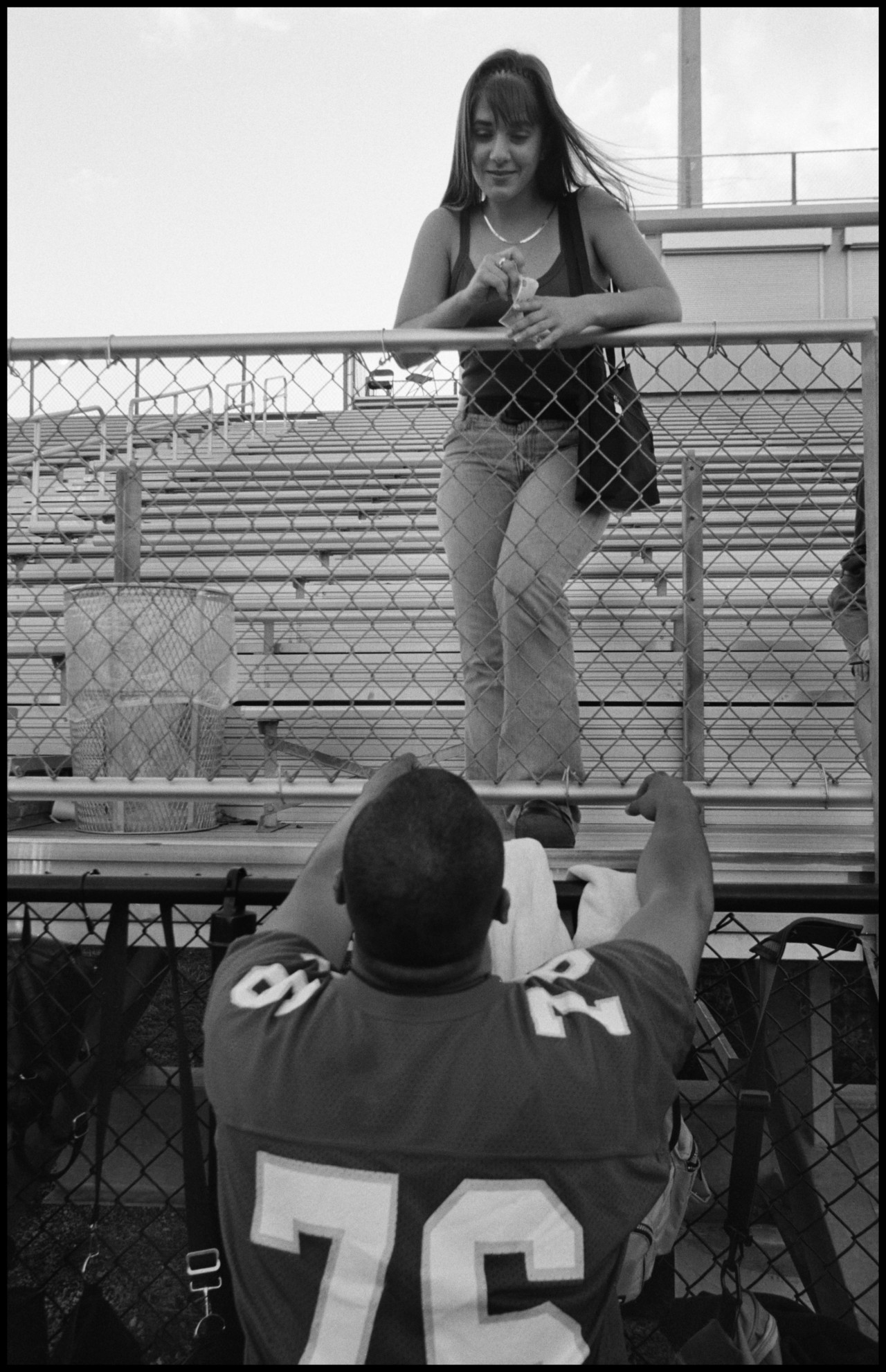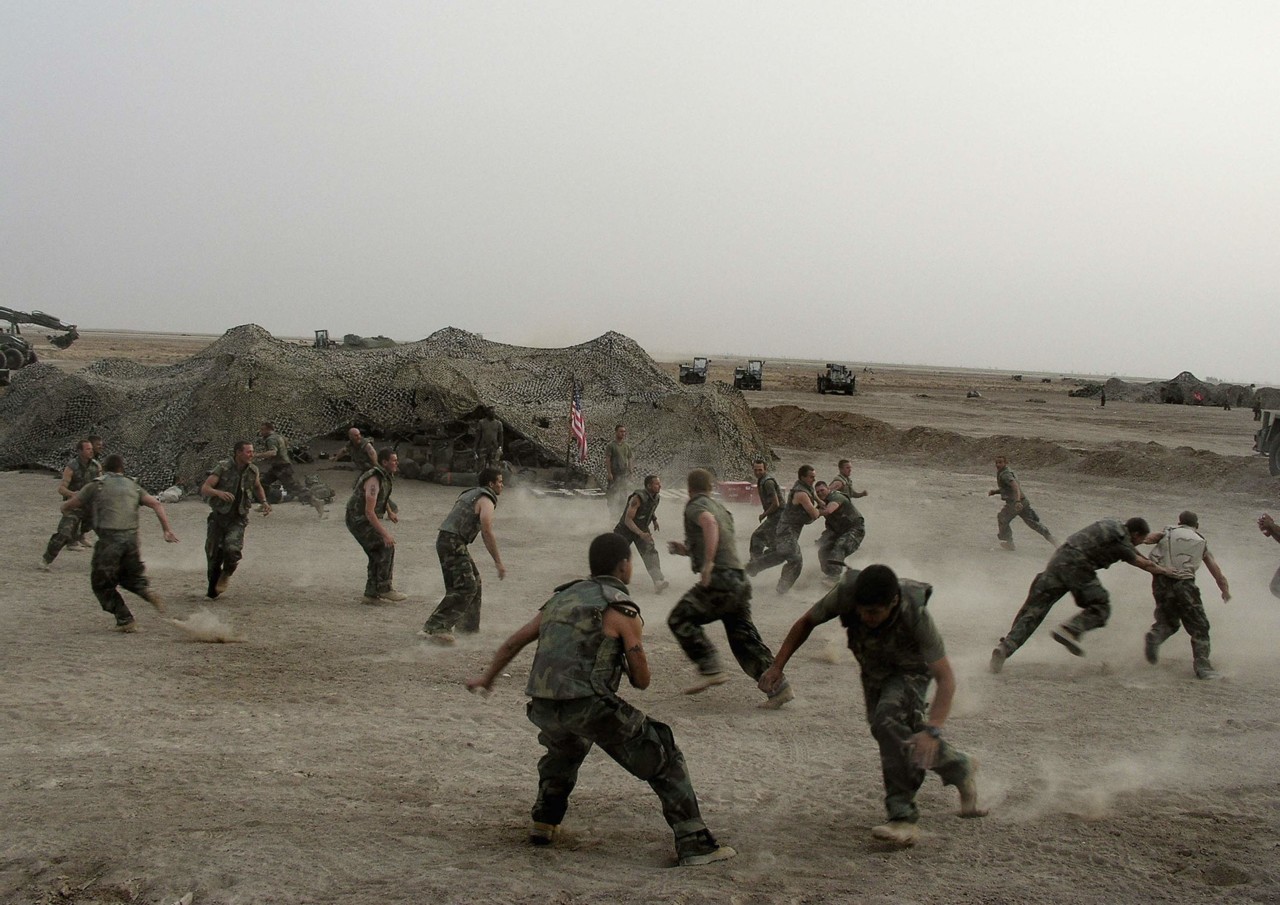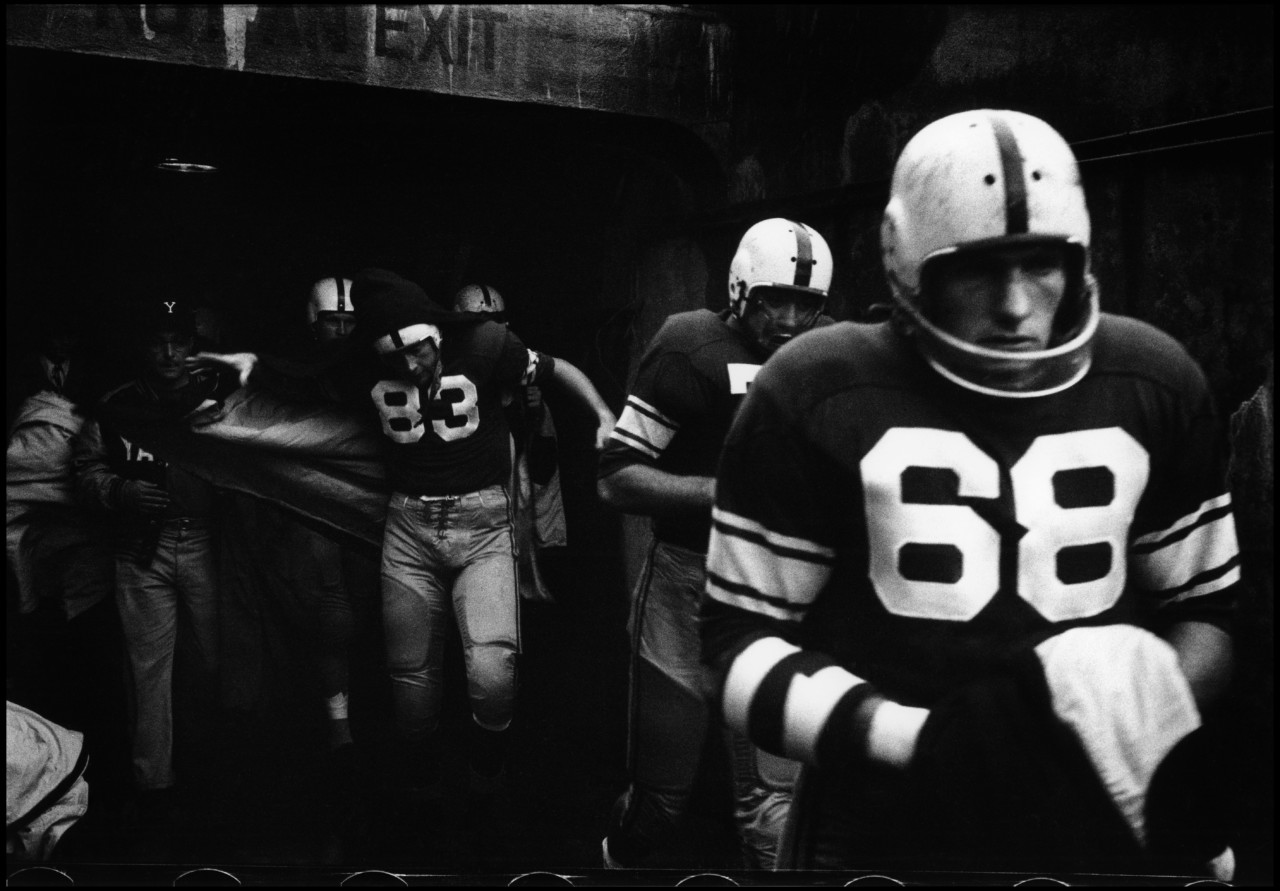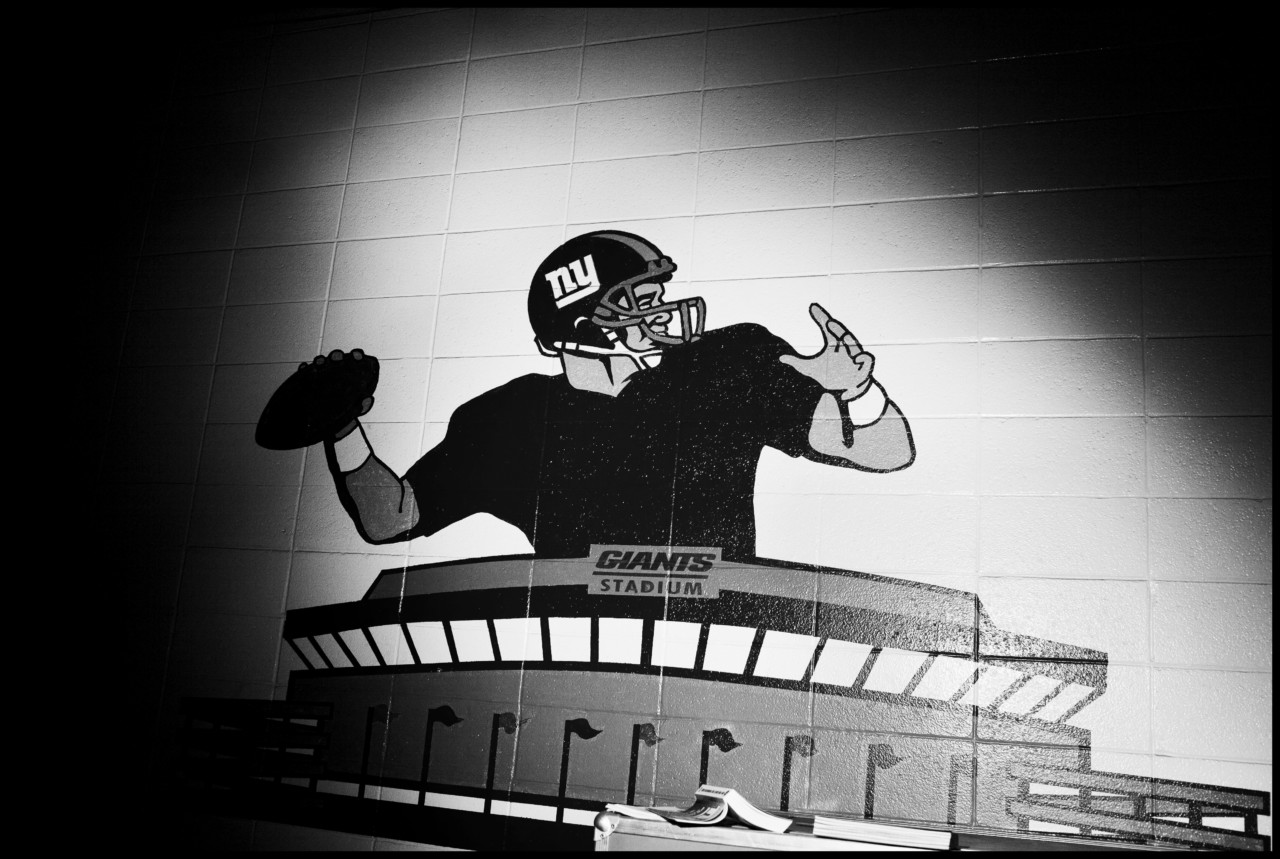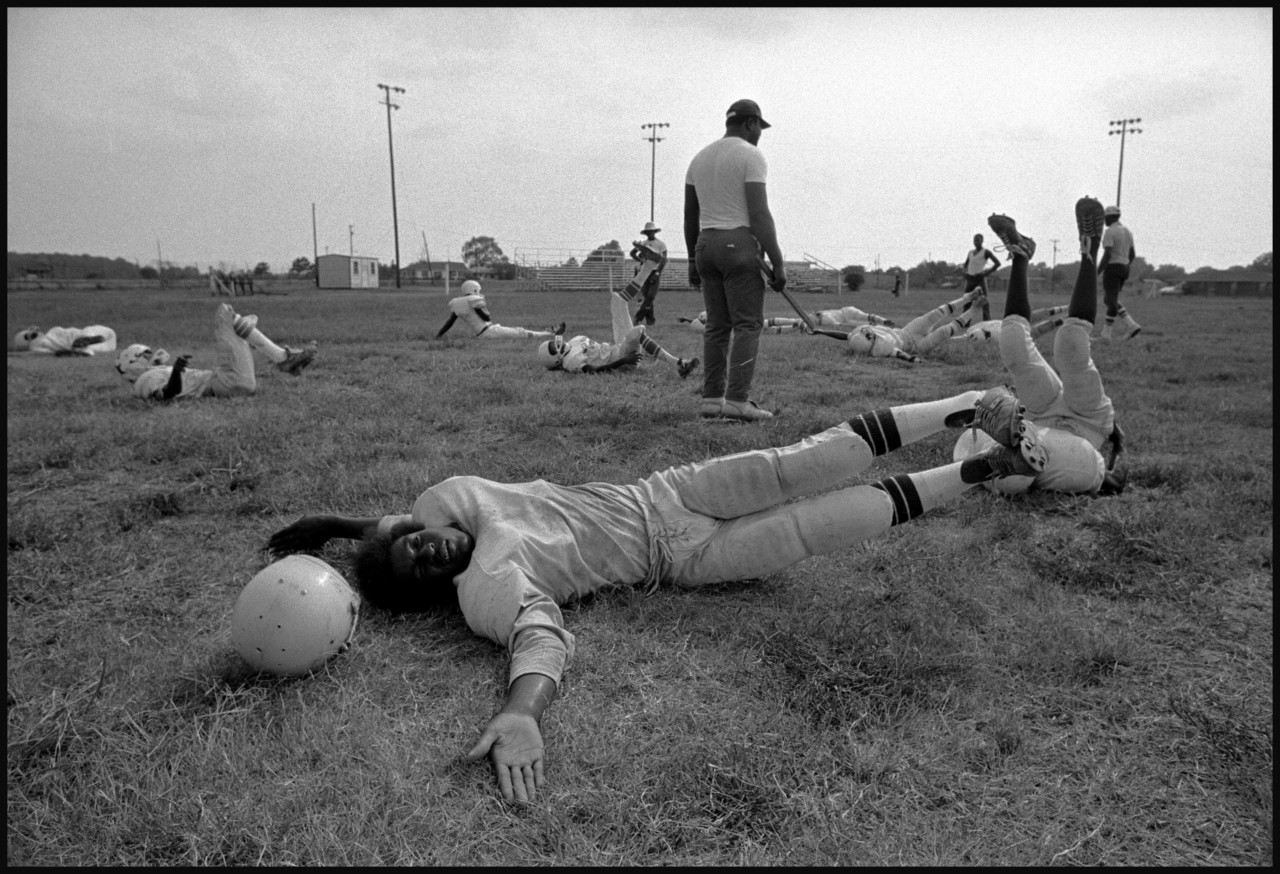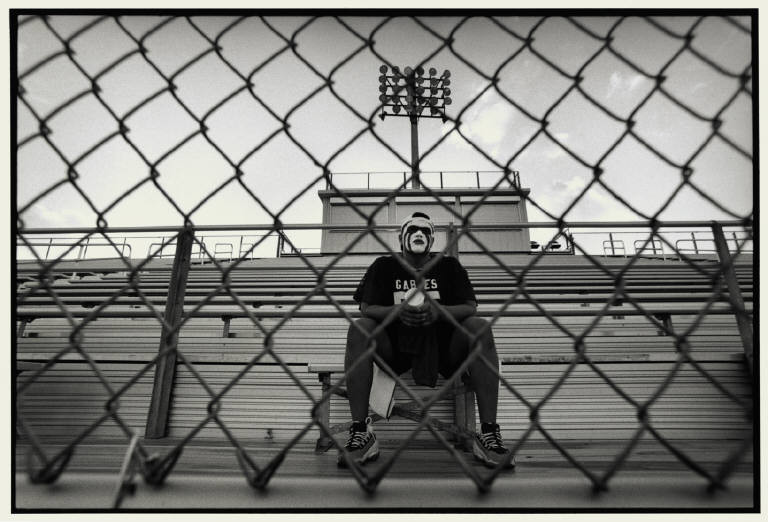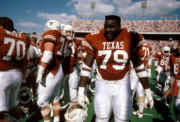American Football Through the Magnum Archive
To mark the occasion of the 2020 Super Bowl we look at the Magnum archive's coverage of the most popular sport in America
Once a year the world of (American) football expands beyond its typical parameters, metamorphosing from a national obsession to an international distraction. The focus for this change is the Super Bowl: the annual championship match of the National Football League (NFL). The match has, since 1967, been played between January and February – and the day of the game has over time become an unofficial holiday in the United States. The Super Bowl is second only to the UEFA Champion’s League final in terms of global audience. In the States alone the event is watched by a TV audience that exceeds an average of 100 million viewers at any given time over the (usually) more than three and a half hours that the game takes to be played.
It is perhaps hard for non-Americans to grasp the outsize place that football holds in many aspects of American life, where its focal position in the education system – as a route for institutional funding and as a means by which players can secure education opportunities beyond their financial means – makes it a keystone in many communities, not least rural or disadvantaged ones. For high schools and universities football is holy and leaves the other American sports – baseball (‘America’s pastime’) and basketball – in runners-up positions. While national audiences can be split along the college versus pro divide within football, the Super Bowl tends to grab the attention of all, with the day of the event now famously the date upon which Americans consume more food than any other, bar Thanksgiving. The day after the Super Bowl has also famously become the day on which the most Americans call in sick from work – presumably attributable to the match’s longevity in conjunction with the aforementioned issues around over-consumption.
Over recent years the sport has fallen under increased scrutiny in terms of safety, with growing concerns over brain damage leading to debate, calls for reform, self-scrutiny, and strenuous denial of the dangers from various quarters. In the 2016 season football player Colin Kaepernick started refusing to stand for the National Anthem while it was performed before games, in protest over the deaths of African Americans at the hands of police – brought at the time to widespread scrutiny through the Black Lives Matter movement. By the end of the season Kaepernick had started to kneel and has been followed in his protest by other footballers and sports personalities since.
Magnum’s photographers have, over more than seven decades, photographed football culture in America. From the famed Army versus Navy game – played before ranks of recruits, to high school teams training in city parks, soldiers playing in the dust of Iraq, the accompanying cheer leaders, crowds, and pageantry; the archive hints at the place the sport holds in American life and society. Here we share a selection of those images held in the Magnum archive.


